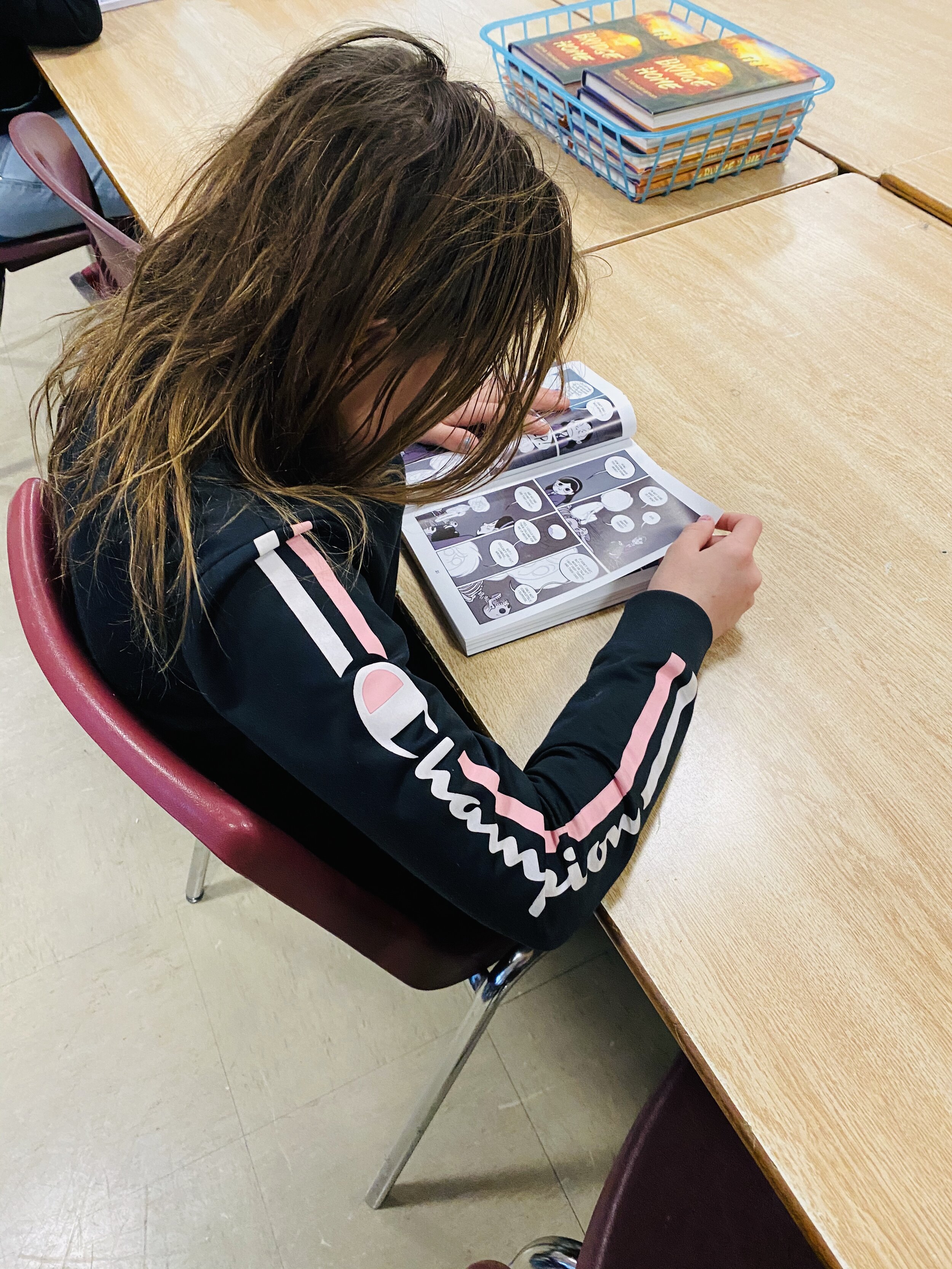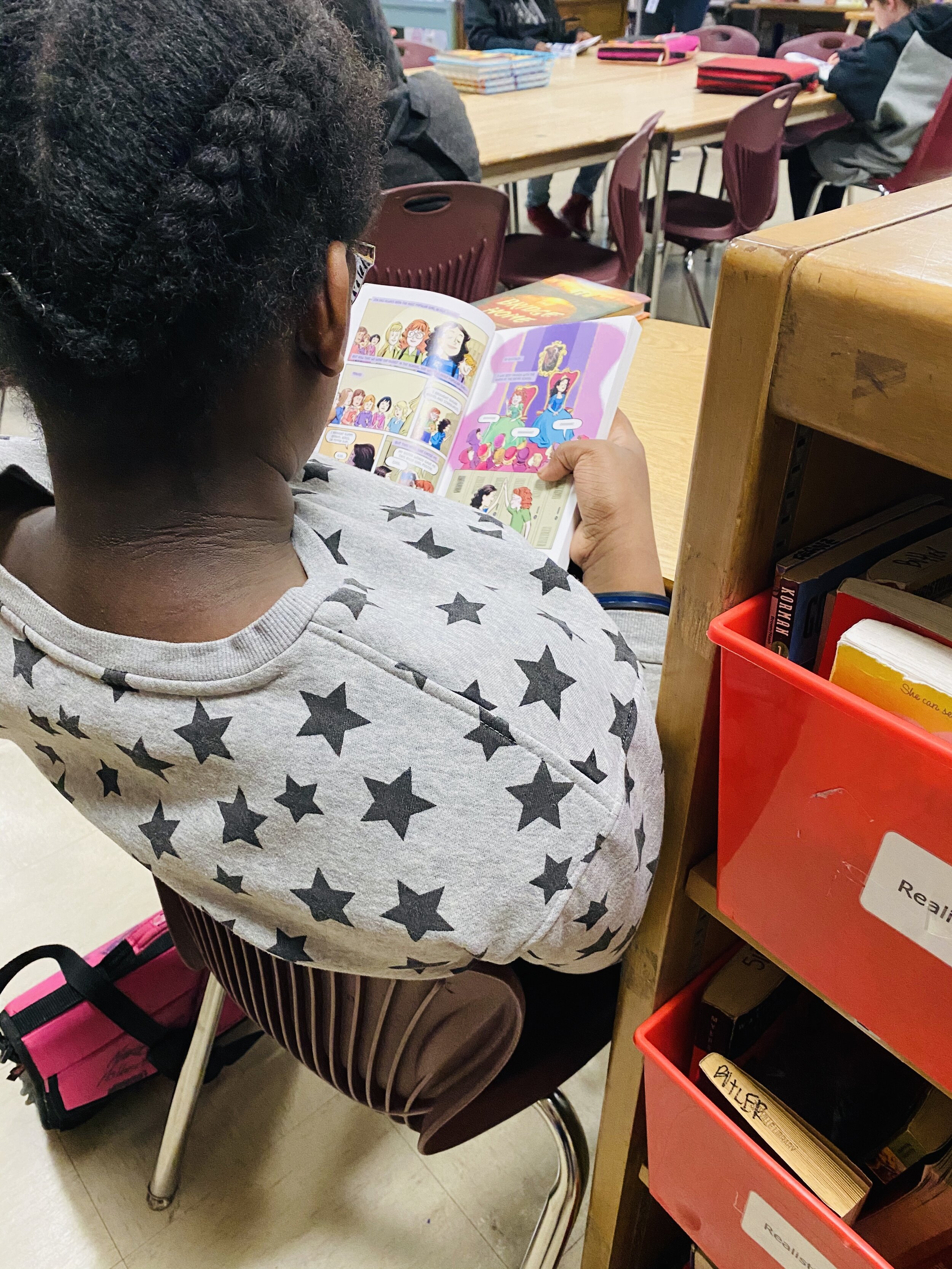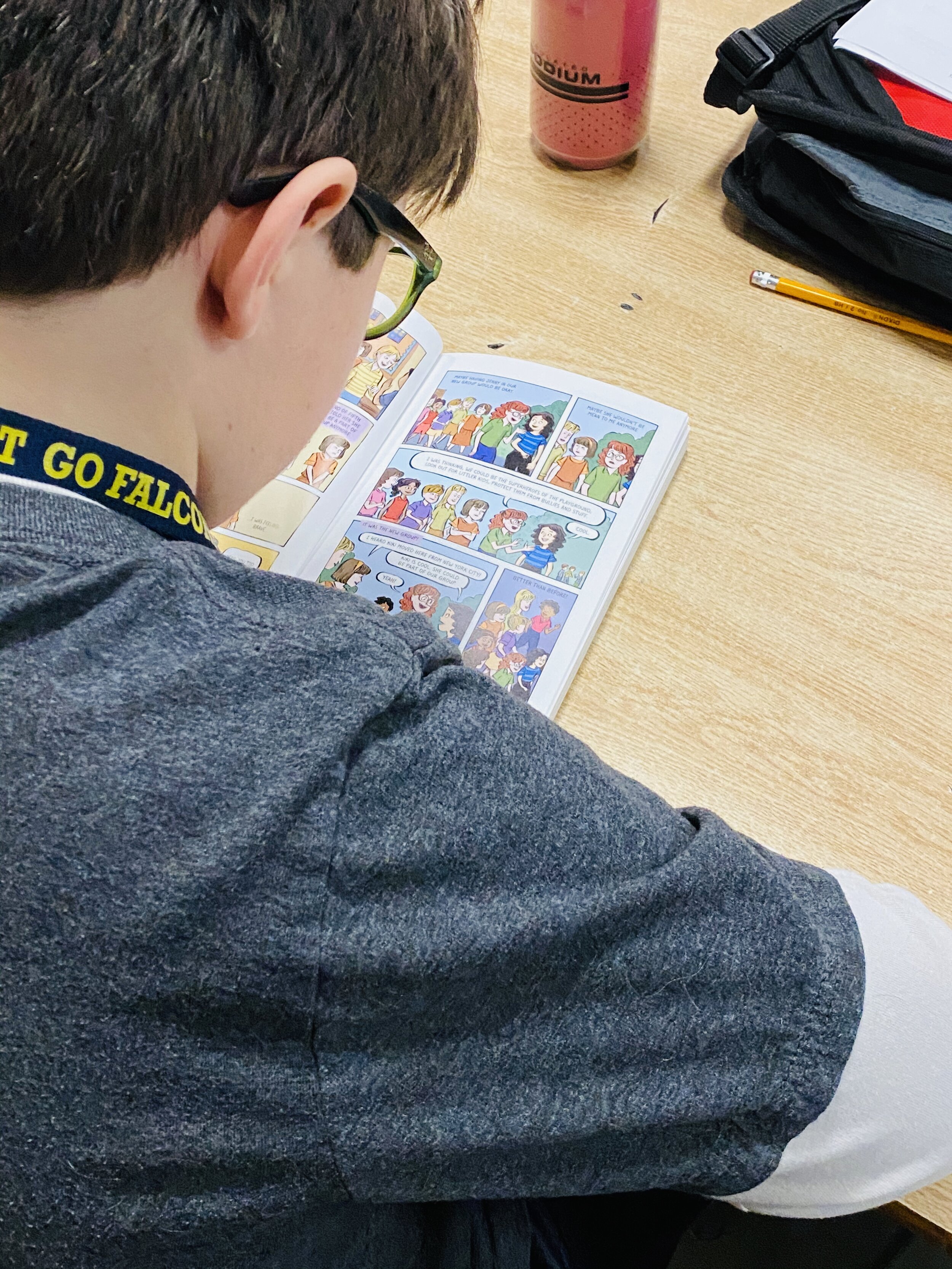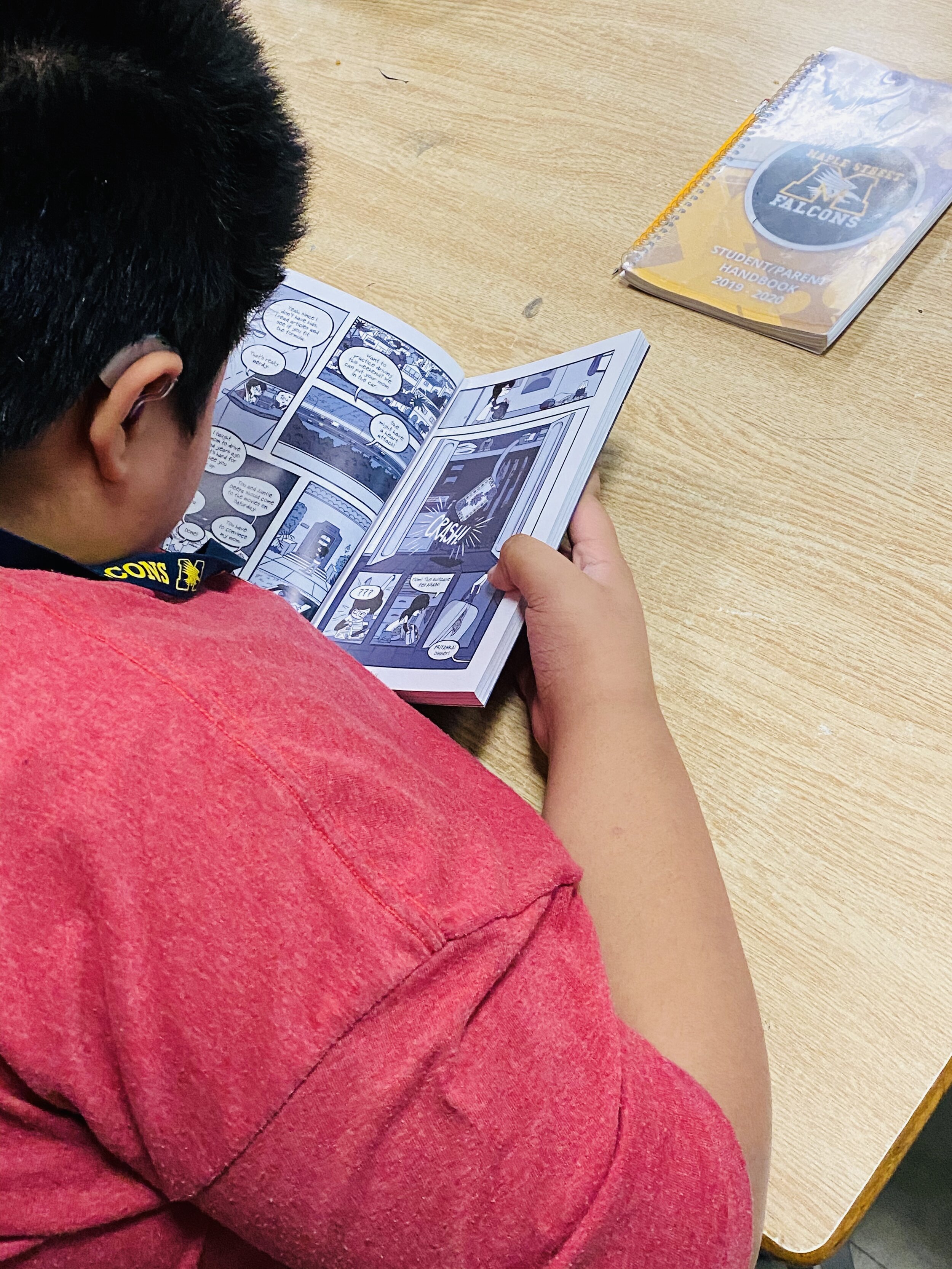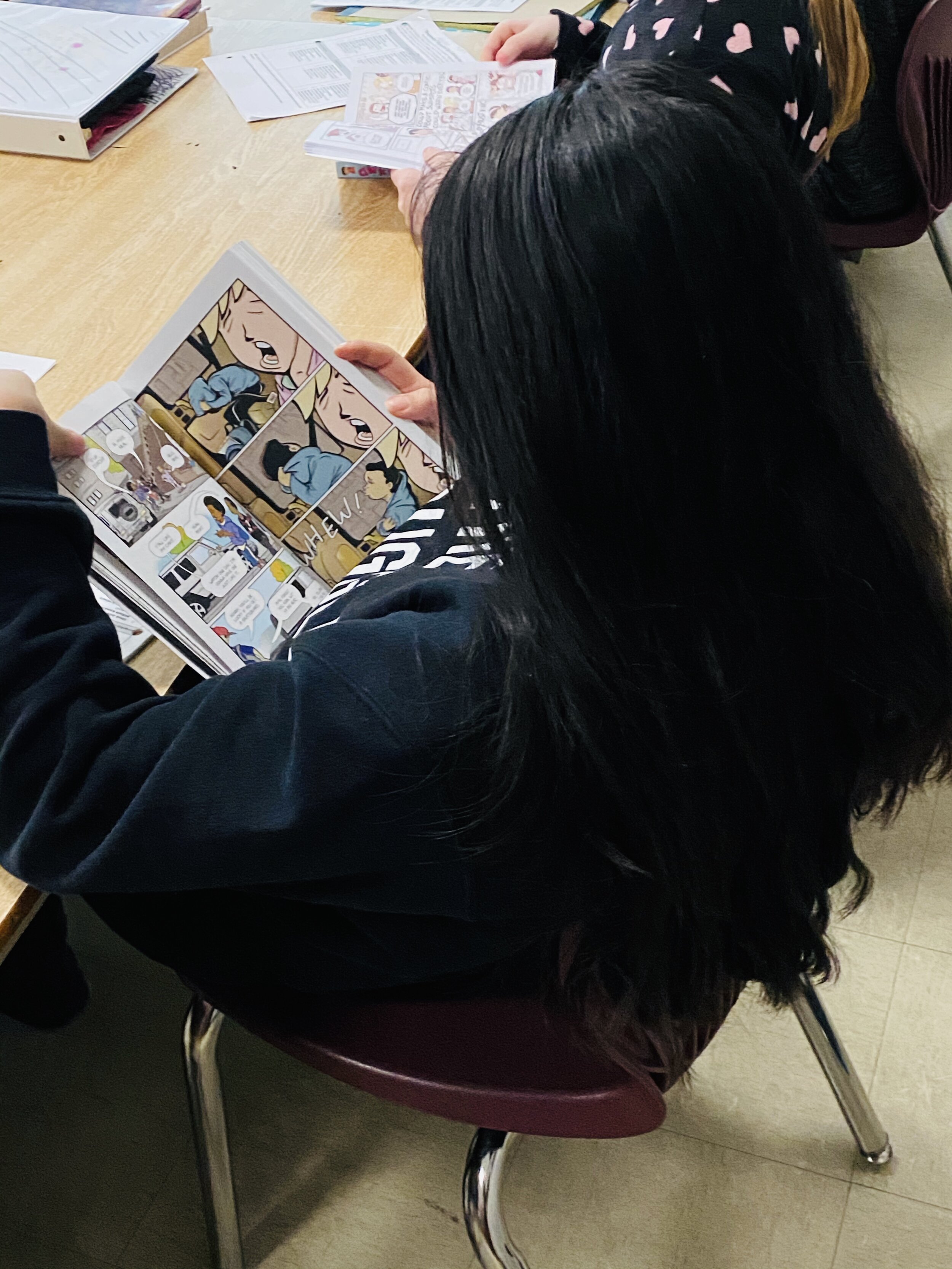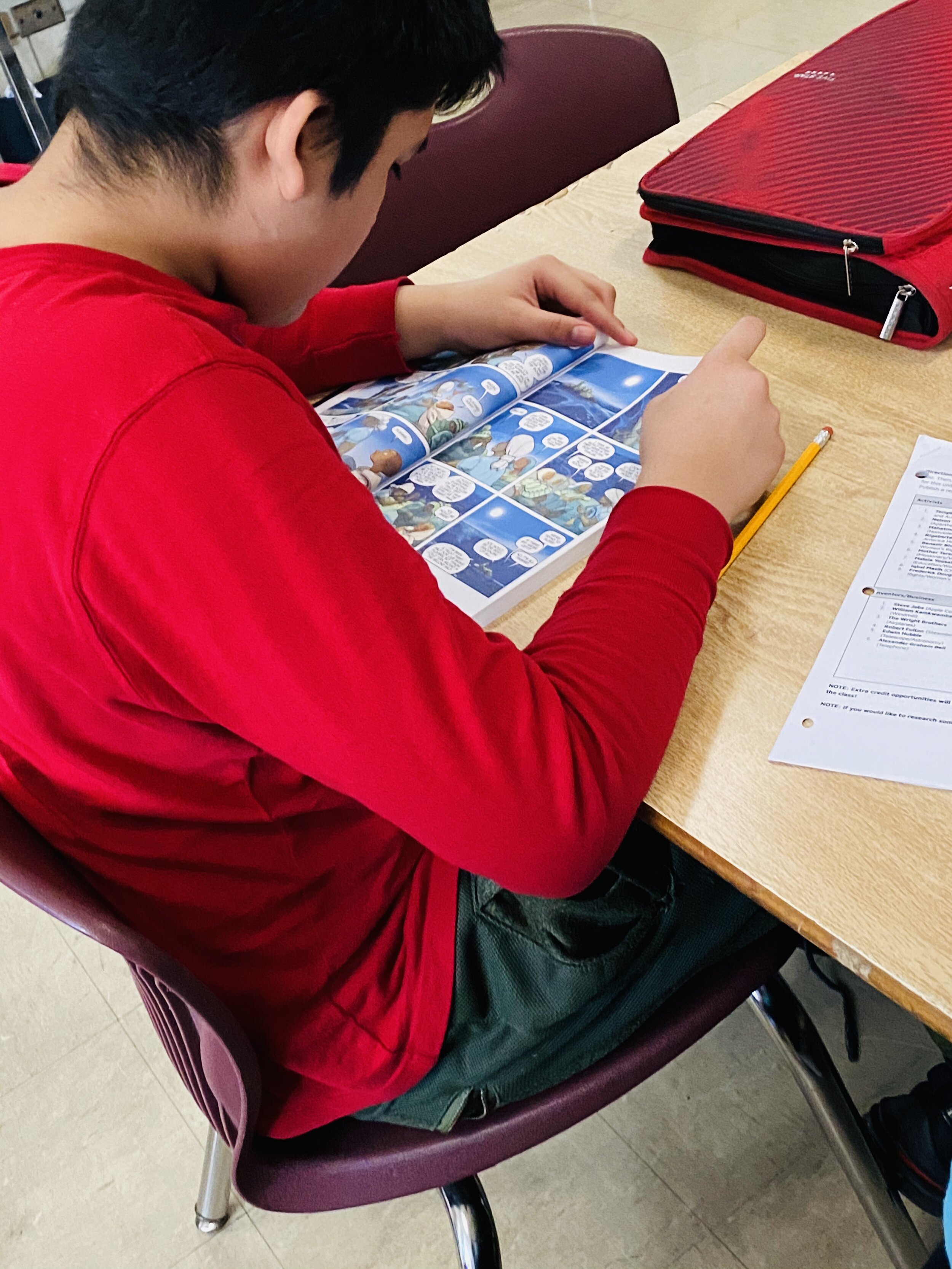Ideas for Middle School Graphic Novel Book Clubs
Creating an #ImageFlood in Middle School English Language Arts
Stephanie Hampton, Middle School English Teacher
In an effort to battle the idea of book deserts and making sure my classroom library includes all types of books, I have been excited to start graphic novel book clubs this year! This mini-project only takes one week of instruction per class that I teach, and it does not take up the entire day for instruction or work. When I wrote a grant in the fall for 100 graphic novels, the mission was simple: use more graphic novels as mentor texts and create small graphic novel book clubs to kids who can share the joy in talking about the same books that they are reading. We see kids naturally want to form book clubs because reading is social, and it makes it so the act of reading can also be less scary. If I am a struggling reader, I find it less intimidating if I have someone else reading with me. Reading is not meant to be an independent experience. Book clubs can be set up in a variety of ways considering materials, time, and accountability. This post outlines how I conducted my mini-project with my sixth-grade students and the considerations that were made for including graphic novels in choice reading time.
I have always loved comics, graphic novels, and picture books. My masters thesis was titled: “Comics Structure in Twenty-First Century Caldecott Winners: Encouraging Independence in Emergent Readers.” When I was putting the grant together to propose the idea, I had to keep in mind the mindset that people still have regarding comics and graphic novels. Many still have the misconception that comics and graphic novels are not “real” books or teach “real” concepts. Contrary to this idea, graphic novels are an access point for our struggling readers because their visual literacy helps them interpret the stories. Sometimes the gap in helping a non-reader become a reader is the insertion of pictures or images. If we know the power of stories, we know we need to find a variety of types and genres of books to help readers access those stories. I love Gene Luen Yang’s TED Talk on comics in the classroom.
Gene Luen Yang, “Comics Belong in the Classroom”
“Inspired by this renewed interest from American educators, American cartoonists are now producing more explicitly educational content for the K-12 market than ever before. A lot of this is directed at language arts, but more and more comics and graphic novels are starting to tackle math and science topics. STEM comics graphics novels really are like this uncharted territory, ready to be explored.”
He proposes how the materials and the actions of using visual learning in teaching are transformative in education. Like parents and curriculum coordinators, sometimes teachers have to also be convinced in the power of the image alongside text. I also feel like graphic novels are undervalued when it comes to mentor texts with writing. It is a misconception that graphic novels contain writing that isn’t model, standard, or “good enough” for students to use as mentors. Often, graphic novels are providing accessible sentences for students to copy and emulate in their writing because the level of writing ranges from 200-400 in Lexile range. While we don’t use levels as a means to determine what books are in our room, it is important to consider the following question: Can our struggling readers access the books that they are choosing? Images coupled with writing that is accessible makes graphic novels the perfect companion to any English Language Arts classroom.
There is also a whole language that can be taught with graphic novels and comics. Maus I by Art Spiegelman was the first graphic novel that was introduced formally into any curriculum that I taught in K-12 education. Students often don’t know that there is a whole vocabulary that goes along with reading comics and graphic novels. The following vocabulary words are taken from Scott McCloud’s Understanding Comics:
Panel
Frame
Gutter
Bleed
Caption
External Dialogue
Internal Dialogue
I would always start with the following presentation:
Planning for Book Clubs
The Books
The 20 books chosen for the grant were based on the criteria outlined in my post, “10 Criteria for Choosing Diverse Texts for Your Classroom.” The goal was to look at a diverse range of authors, genres, and types of books. Is this list as extensive or exhaustive as I would like? No. However, it is a good start that offers a mix of current and relevant books available for middle schoolers now. In this stack, there is a balance of genre:
Realistic Fiction
Non-fiction/Memoir
Fantasy
Historical Fiction
The books are across many categories and take into consideration notions of stereotypes, invisibility, and tokenism with characters and situations. I also like that a few of these have not only cross-curriculum opportunities for instruction, but are also graphic novel versions of other fiction texts.
Book Selection
Google Slides
For my advanced group of students, I started this process with books talks of all 20 choices. For my general classes, we narrowed down certain titles for each class hour to make sure I had enough books for each group. Either way, the start of this process began with the book talk. Many students wanted to read more than one book, so I had them think about their top 3-4 choices. A graphic novel is often a faster read than a traditional novel. Many people either don’t stop to look at the images in-depth or can process the use of visuals at a faster rate than written text. It doesn’t always have to be the case where it is faster, but many of my students wanted to read ahead and take in more books as they were available outside of their assigned groups.
Google Forms
Students submitted their choices in a Google Form. This way, I could easily see what titles students wanted the most, and I can use this feedback for future projects. I also wanted the ability to download my results to a Google Sheet.
Google Sheets
Once in the Google Sheet, I could color-code first or second choices easily. I managed to put 120 general students into book groups in about 20 minutes. This streamlined the process and made it so the days of handwriting the groups were significantly easier. I color-coded based on the book, and then I wrote the groups below the data. I then cross-checked the groups to see if there were any conflicts or issues with group members in each group.
Setup of Meetings
Accountability
Whenever I talk to teachers about book clubs or literature circles, the main concern is accountability. I struggle with this idea in book clubs because one of the reasons why I love reading is that I have the ability to talk to others about what I just read-without a worksheet. There is something genuine about talking about what I just read with other people who are reading the same thing. There is also a learning curve in skills when I have never been allowed or asked to participate in this type of activity before. What do I say? How do I share my reading? My students-no matter what level or skill-come to me in middle school and need to acquire the skills to talk to each other about books that they are reading. The talking is the best part. Each day I would give them time to read independently, and then I asked them to share with each other using two posted guided question, such as:
1.) What did you just read about? (Plot)
2.) What is your opinion of your book? (Reader Response)
Reading Appreciation
As a teacher monitoring book club discussions, the hardest part was to just let them talk. The timer, in a sense, was for me. I knew I had 5-10 minutes where I should not interfere in conversation. Sometimes, the conversation got side-tracked. I think this is okay. How many times am I in the bookstore talking about books and then simultaneously also talking about something else? Conversations are messy. In education, we try to over-monitor our students’ conversations and may in a way impact their ability to see the correlation between reading the same book as another person and sharing a specific experience with others. Books are links in which we connect to one another. Graphic novels are just one of the ways to level the playing field through images AND text to make this type of bonding accessible for all readers.



